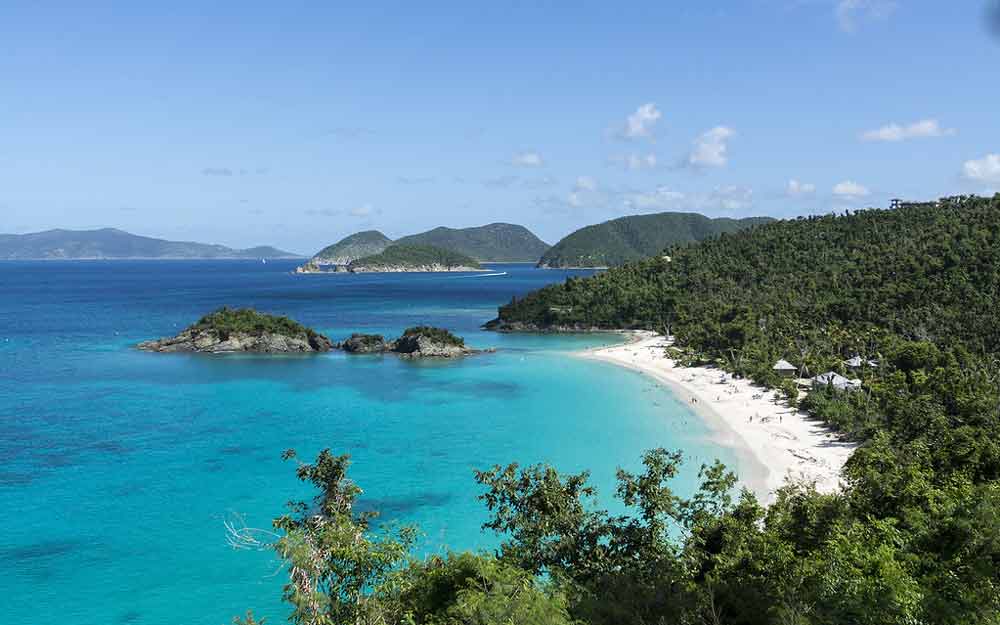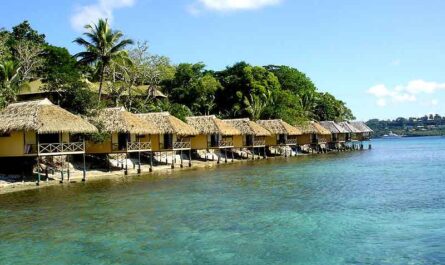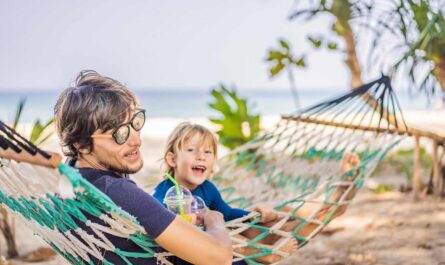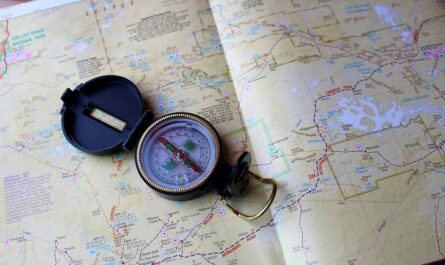What are some of the interesting facts about Kiribati? The country’s isolation contributes to its distinct identity and challenges. Despite its small population, Kiribati faces pressing issues such as climate change-induced sea-level rise, which threatens the very existence of its low-lying islands. The capital, South Tarawa, illustrates both the cultural richness and environmental vulnerability of Kiribati, with traditional thatched-roof houses juxtaposed against modern developments. In this article, I will talk about some interesting facts about Kiribati. Keep reading.
Culturally, Kiribati is renowned for its vibrant music and dance, including the lively traditional dance known as the “te buki,” performed during celebrations and ceremonies. Fishing and subsistence farming remain integral to the economy and way of life for many residents, showcasing a deep connection to the land and sea. Kiribati’s journey into the 21st century is marked by a delicate balance between preserving its heritage and confronting modern challenges, making it a fascinating microcosm of Pacific Island resilience and adaptation.
Interesting Facts About Kiribati: History, Culture, Travel
Kiribati, a remote island nation in the central Pacific Ocean, holds a unique allure with its pristine coral atolls and rich Polynesian culture. Comprising 33 atolls and reef islands, Kiribati stretches across an immense area of the Pacific, straddling the equator. Its name, pronounced “Kiribas” in the local Gilbertese language, reflects its former colonial ties and is derived from the local pronunciation of “Gilberts,” a reference to the Gilbert Islands. Here are some interesting facts about Kiribati:
1. Scattered Paradise: Kiribati, a Micronesian Archipelago
Kiribati, a captivating Micronesian nation in the Pacific Ocean, is composed of 33 atolls and reef islands spread across an immense maritime expanse. Each atoll is a world unto itself, with its unique ecosystem and cultural heritage. The islands, adorned with palm-fringed beaches and turquoise lagoons, offer a glimpse into nature’s unspoiled beauty. The people of Kiribati, known for their warmth and resilience, have developed a deep connection with the ocean that surrounds them.
Traditionally, fishing and craftsmanship are integral to their way of life, showcasing a blend of tradition and adaptation to the modern world. The isolation of these atolls has preserved their natural splendor but also presents challenges in terms of accessibility and sustainability. Kiribati’s scattered geography not only defines its physical landscape but also shapes the cultural diversity and ecological richness that makes it a unique gem in the Pacific.
2. Phoenix Islands: A Time Zone Apart
Nestled within Kiribati, the Phoenix Islands epitomize geographical peculiarity by straddling the International Date Line. This positioning confers a distinctive quirk: while the Gilbert Islands adhere to one day, the Phoenix Islands embrace another, setting them a full day ahead or behind depending on the direction of travel. This temporal dichotomy adds a mystique to the islands, where time zones become a narrative of their own.
Despite their remote location, the Phoenix Islands are not merely a curiosity but also a critical hub for biodiversity, hosting thriving marine life and coral reefs that remain largely untouched. This juxtaposition of natural beauty and temporal oddity underscores the Phoenix Islands’ allure as a destination for explorers and conservationists alike.
3. Endangered Wildlife
Kiribati’s diverse ecosystem is home to a variety of bird species, including several that face critical endangerment, such as the Kiribati frigatebird. These avian inhabitants play integral roles in the island nation’s ecological balance, yet their populations are increasingly threatened by habitat loss, invasive species, and climate change. The Kiribati frigatebird, with its distinctive appearance and behavior, symbolizes the delicate interplay between wildlife conservation and sustainable development.
Efforts to protect these birds involve conservation initiatives, habitat restoration projects, and community education programs aimed at fostering environmental stewardship. Despite challenges, Kiribati’s commitment to preserving its avian biodiversity underscores a broader global imperative to safeguard fragile ecosystems and ensure the survival of endangered species for future generations.
4. Christmas Island Wildlife Sanctuary
Christmas Island, nestled in Kiribati’s eastern reaches, serves as a vital wildlife sanctuary renowned for its unique flora and fauna. This remote outpost teems with endemic species adapted to its pristine habitats, including the rare Christmas Island warbler and the Christmas boobook owl. The sanctuary’s designation underscores Kiribati’s dedication to environmental conservation, balancing human activities with the protection of natural treasures.
Managed conservation efforts on Christmas Island encompass habitat preservation, species monitoring, and sustainable tourism practices that minimize ecological impact. Visitors to this sanctuary are treated to unparalleled biodiversity, from lush rainforests to vibrant coral reefs, offering glimpses into Kiribati’s ecological heritage and the imperative to safeguard it for future generations.
5. Emigration Challenges
For some Kiribati islanders, emigration has emerged as a pressing concern amidst challenges posed by limited resources and the existential threat of climate change. Rising sea levels and extreme weather events jeopardize livelihoods, undermining traditional subsistence practices reliant on agriculture and fishing. These environmental pressures compel some communities to contemplate relocation to more stable environments, presenting complex socioeconomic and cultural dilemmas.
Emigration, whether internal or international, reshapes familial structures and community dynamics, prompting a broader discourse on resilience, adaptation, and global climate justice. Kiribati’s government grapples with these challenges through climate adaptation policies, international partnerships, and community-driven resilience initiatives aimed at mitigating displacement and preserving cultural continuity amidst environmental uncertainty.
6. Religion in Kiribati
Christianity holds profound sway over Kiribati’s cultural and social fabric, exerting a unifying influence across the scattered atolls. Introduced by missionaries in the 19th century, Christianity, predominantly in its Protestant and Catholic forms, permeates daily life through church attendance, religious ceremonies, and moral teachings. The Christian faith intertwines with traditional beliefs, shaping Kiribati’s ethical framework and communal values.
Church congregations serve as hubs for spiritual guidance, social cohesion, and community service, embodying Kiribati’s commitment to faith-based principles of compassion, solidarity, and resilience. Religious holidays and festivals, such as Christmas and Easter, punctuate the annual calendar, uniting islanders in prayer, reflection, and celebration. Christianity’s enduring influence underscores its role not only as a spiritual cornerstone but also as a custodian of Kiribati’s cultural identity amidst evolving societal norms and global influences.
7. Traditional Kiribati Clothing
The vibrant attire of Kiribati, steeped in cultural symbolism and craftsmanship, showcases the island nation’s rich heritage and artistic flair. Traditional clothing, crafted from locally sourced materials like pandanus leaves and vibrant fabrics, reflects intricate designs passed down through generations. Women often wear te tibuta, a colorful wrap-around skirt adorned with intricate patterns that convey familial lineage and social status.
Men don te an’ beret, a waistcloth complemented by necklaces and shell jewelry, evoking pride in Kiribati’s seafaring traditions and communal solidarity. Traditional attire transcends everyday wear, adorning ceremonial occasions, dance performances, and festive gatherings that celebrate ancestral customs and communal unity. Its preservation amidst modern influences underscores Kiribati’s commitment to cultural heritage, fostering pride and identity through the timeless artistry of traditional clothing.
8. Taberwa: A Celebration of First Fruits
Taberwa, a cherished harvest festival in Kiribati, embodies the spirit of abundance, gratitude, and communal harmony. Held annually across the atolls, Taberwa marks the culmination of agricultural cycles, honoring the bounty of first fruits with feasting, song, and dance. Families and communities gather in jubilant festivities, sharing traditional foods like babai (pandanus pudding) and ika (coconut crab) while partaking in cultural performances that showcase Kiribati’s artistic heritage.
Taberwa’s rituals include offerings of thanks to ancestral spirits and prayers for prosperity, reinforcing ties to land and sea. The festival’s significance extends beyond agricultural rituals, catalyzing social cohesion and intergenerational storytelling that preserves oral histories and ecological wisdom. Taberwa’s enduring legacy underscores Kiribati’s resilience amidst environmental challenges, celebrating the cycles of life and the interconnectedness of people, culture, and nature.
9. Tarawa: Vibrant Heart of Kiribati
Tarawa, the bustling capital of Kiribati, straddles the boundary between urban development and traditional village life. Situated on atolls, Tarawa is a melting pot of cultures, where modern amenities coexist with customary practices. The capital’s vibrant markets offer a sensory feast of local produce and handicrafts, reflecting Kiribati’s rich cultural heritage. The atolls’ geographical constraints have spurred ingenuity in urban planning, with structures adapted to withstand the challenges posed by rising sea levels and limited land space. Tarawa stands as a testament to Kiribati’s resilience in the face of environmental and societal pressures, embodying a spirit of community and adaptation that defines island life in the Pacific.
10. Limited Resources
Kiribati grapples with the dual challenges of freshwater scarcity and limited natural resources, which significantly impact sustainable development efforts across the archipelago. The scarcity of freshwater sources, exacerbated by rising sea levels and salinization of groundwater, poses a formidable obstacle to agricultural productivity and public health. Islanders rely heavily on rainwater harvesting and desalination technologies to meet daily water needs, underscoring the critical need for innovative solutions to ensure water security.
Meanwhile, limited natural resources constrain economic diversification and infrastructural development, prompting strategic investments in renewable energy and sustainable fisheries management. Kiribati’s commitment to environmental stewardship is evident in conservation initiatives that safeguard marine biodiversity and mitigate climate change impacts. As the nation navigates these resource constraints, community resilience and international partnerships play pivotal roles in forging pathways toward a resilient and sustainable future.
11. Education System
Education stands as a cornerstone of Kiribati’s development strategy, blending academic rigor with the preservation of traditional knowledge and cultural heritage. The education system emphasizes foundational literacy and numeracy alongside curricula that celebrate Kiribati’s linguistic diversity and ecological wisdom. Schools serve as hubs for community engagement, fostering lifelong learning and skills development that empower youth to navigate global challenges. Educational reforms prioritize teacher training, curriculum enrichment, and digital literacy initiatives to equip students with 21st-century competencies.
Traditional knowledge passed down through oral histories and ancestral practices, enriches educational discourse, instilling values of environmental stewardship and cultural pride. Despite logistical challenges posed by the archipelago’s dispersed geography, educational access remains a cornerstone of Kiribati’s commitment to equitable development and inclusive growth.
12. Sports in Kiribati
Football, or soccer, enjoys widespread popularity as Kiribati’s premier sport, uniting communities across the atolls in spirited competition and recreational play. The sport’s allure transcends age and gender, fostering camaraderie and healthy lifestyles among Kiribati’s youth. Local clubs and grassroots initiatives promote athletic talent development, providing pathways for aspiring athletes to showcase their skills at regional and international tournaments.
Football tournaments, such as the Christmas Cup and Independence Cup, serve as rallying points for spectators and participants alike, celebrating athleticism and cultural diversity. Beyond football, Kiribati embraces traditional sports like te ano (wrestling) and te buki (stick-fighting), preserving ancestral customs through spirited competitions that honor physical prowess and community spirit. Sportsmanship values of teamwork, discipline, and fair play underscore Kiribati’s sporting ethos, highlighting the integral role of sports in fostering social cohesion and national pride.
13. Limited Land Area
Kiribati occupies one of the world’s smallest land areas, with its territory predominantly composed of vast territorial waters encompassing 33 atolls and reef islands. The nation’s landmass, spread across a vast expanse of the Pacific Ocean, poses unique challenges and opportunities for sustainable development. Limited habitable land necessitates prudent urban planning and infrastructure development strategies that prioritize resilience against climate change impacts, including coastal erosion and inundation.
Kiribati’s territorial waters, rich in marine biodiversity and natural resources, offer avenues for economic diversification through sustainable fisheries management and ecotourism initiatives. The nation’s small land area underscores the importance of adaptive governance frameworks, community engagement, and international partnerships in safeguarding natural capital and enhancing livelihoods for future generations.
14. Christmas Island: Timeless Isolation
Christmas Island, a part of Kiribati, holds a distinct place in the nation’s geography and timekeeping. Positioned east of the International Date Line, it observes a different time zone compared to the rest of the country. This peculiarity lends Christmas Island an air of timeless isolation, where the rhythm of life unfolds independently of neighboring atolls. The island’s natural beauty, from pristine beaches to lush tropical vegetation, captivates visitors seeking solace in its serene landscapes. Despite its remote location, Christmas Island thrives as a testament to Kiribati’s diverse geography and the adaptability of its people to both tradition and change.
15. Copra: A Source of Income
Copra, the dried meat of coconuts, stands as a cornerstone of Kiribati’s economic landscape. This commodity plays a pivotal role in sustaining the island nation’s economy, constituting a significant portion of its exports. The process begins with the harvesting of mature coconuts, which are then split open to extract the inner flesh. This meat is sun-dried until it becomes copra, a process that requires meticulous attention to the tropical climate’s nuances. Kiribati’s reliance on copra spans generations, with many families engaged in its production as a primary means of income.
Beyond economic significance, copra cultivation shapes social dynamics, fostering community cooperation during harvest seasons. The trade of copra intertwines with global markets, influencing Kiribati’s economic policies and development strategies. However, the industry faces challenges, such as fluctuating market prices and climate change impacts on coconut yields. Nevertheless, copra remains a resilient pillar of Kiribati’s economic foundation, illustrating the profound link between natural resources, livelihoods, and national identity.
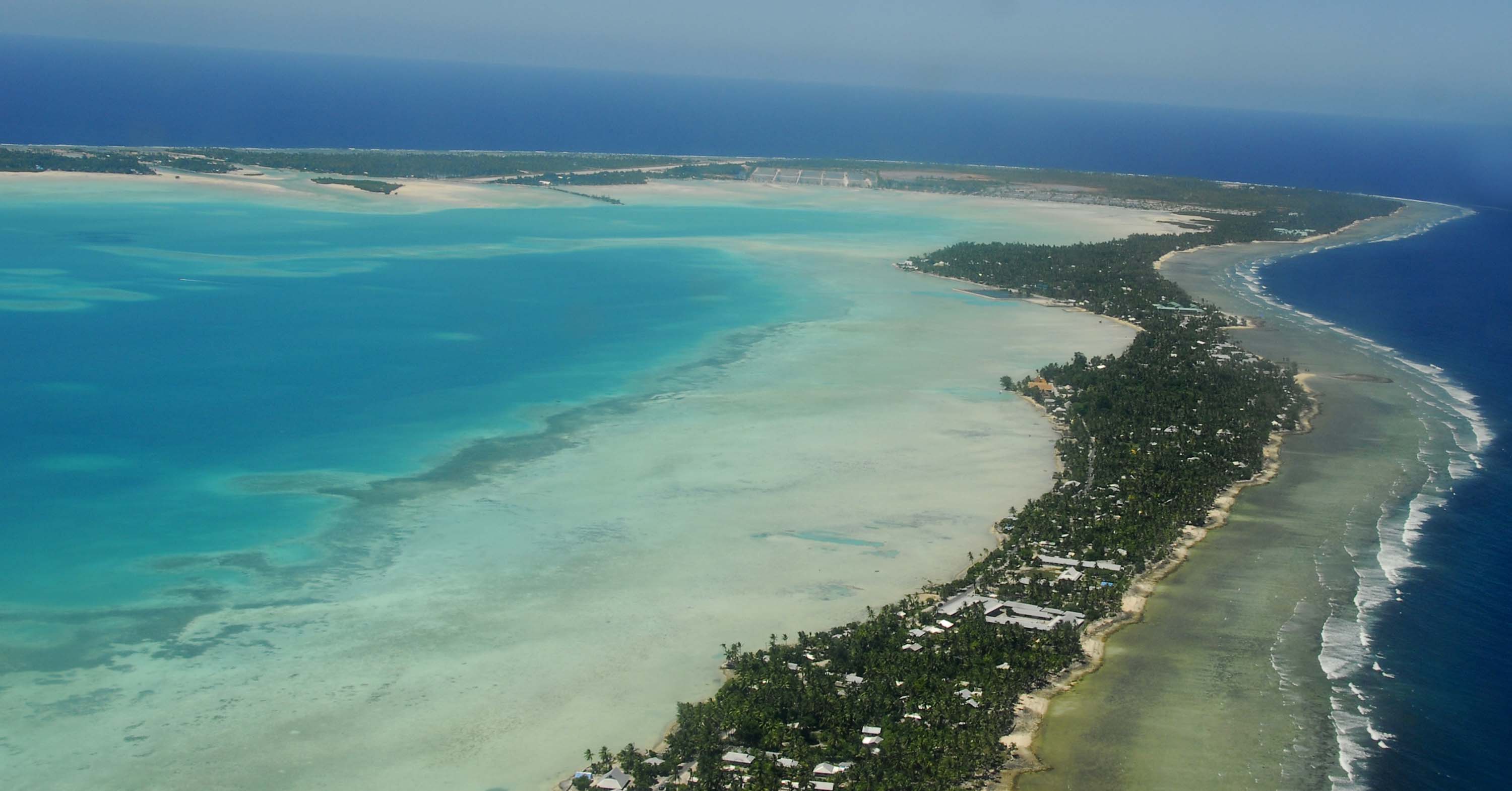
16. Fishing: A Way of Life
Fishing epitomizes more than sustenance in Kiribati; it embodies a cultural ethos deeply embedded in everyday life. Across the scattered atolls, fishing serves as a vital economic activity, providing food security and livelihoods for countless families. The practice blends traditional knowledge with modern techniques, as fishermen venture into the abundant Pacific waters in outrigger canoes or motorized boats.
Techniques vary from handline fishing to net casting, reflecting a diverse skill set passed down through generations. Beyond economic benefits, fishing carries spiritual and social significance, often celebrated through communal rituals and feasts. It binds communities together, fostering a shared sense of stewardship over marine resources. Yet, the sector faces challenges, including overfishing and the effects of climate change on marine ecosystems. Despite these pressures, fishing remains integral to Kiribati’s cultural identity, underscoring the resilience of traditions amidst a changing world.
17. Vibrant Kiribati Culture
Kiribati pulsates with a vibrant cultural tapestry woven from centuries-old traditions. The archipelago’s cultural heritage manifests in lively dances, rhythmic music, and captivating storytelling. Traditional dances, such as the Te Buki and the lively Te Kaimatoa, echo tales of ancestry and celebrate life’s milestones. Music, often accompanied by rhythmic percussion and melodic chants, permeates daily life, setting the cadence for communal gatherings.
Storytelling preserves oral histories, passing down wisdom through narratives that traverse time and tide. Festivals punctuate the year, each festivity steeped in unique rituals that honor ancestry and appease spirits. Artisan crafts, from intricately woven mats to finely carved wooden sculptures, reflect Kiribati’s artistic prowess and cultural pride. This rich tapestry of culture serves as a beacon, uniting communities across the atolls and defining Kiribati’s distinctive identity on the global stage.
18. Te Atu Kiribati: The National Anthem
“Te Atu Kiribati,” the resounding anthem of Kiribati, embodies the nation’s journey towards independence and sovereignty. Composed in Gilbertese, the anthem’s lyrics evoke pride in Kiribati’s unique heritage and enduring resilience. Its stirring melody echoes across the atolls during national celebrations and solemn ceremonies, invoking a sense of unity and patriotism among Kiribati’s people.
The anthem’s verses pay homage to the land, sea, and ancestors, invoking blessings for prosperity and peace. Sung with fervor and reverence, “Te Atu Kiribati” symbolizes the aspirations of a nation forging its path in the global community. Its resonance transcends language, resonating with the hearts of Kiribati’s citizens, young and old, reaffirming their commitment to preserving cultural identity and national pride.
19. Kiribati Language
Gilbertese, the mother tongue of Kiribati, serves as a linguistic cornerstone, reflecting the nation’s cultural diversity and resilience. As an official language alongside English, Gilbertese binds communities across the atolls, facilitating communication and preserving ancestral wisdom. Its phonetic simplicity belies a rich lexicon steeped in maritime traditions and ecological knowledge. Gilbertese enables nuanced expressions of humor, wisdom, and spirituality, integral to everyday interactions and ceremonial rites.
The language evolves alongside Kiribati’s dynamic cultural landscape, adapting to modern influences while safeguarding ancient dialects and idioms. Its rhythmic cadence resonates in traditional chants and songs, underscoring Gilbertese’s role as a cultural conduit across generations. Amidst globalization’s currents, Gilbertese remains a testament to Kiribati’s linguistic diversity and the enduring legacy of its island heritage.
20. Unique Canoe Culture
In Kiribati, the mwane, or traditional canoe, stands as a revered emblem of seafaring ingenuity and cultural continuity. Crafted from indigenous materials like breadfruit wood and pandanus leaves, these canoes embody centuries-old craftsmanship and navigational prowess. Mwane serves as essential tools for fishing expeditions, island hopping, and ceremonial voyages, navigating the archipelago’s intricate waterways with grace and precision.
Their construction reflects a harmonious balance between natural resources and cultural craftsmanship, guided by ancestral knowledge passed down through oral traditions. Each canoe bears distinctive markings and designs, signifying familial lineage and spiritual connections to the sea. Festivals and regattas showcase mwane in spirited races and navigational challenges, celebrating Kiribati’s maritime legacy. Despite modern advancements, the mwane endures as a symbol of resilience, uniting communities and honoring the profound relationship between Kiribati’s people and their oceanic environment.
21. Coconut Crabs: Guardians of Kiribati’s Ecosystem
Coconut crabs, the gentle giants of Kiribati’s ecosystem, play a crucial role in maintaining ecological balance on the atolls. As the world’s largest land-dwelling arthropods, these creatures are not only formidable scavengers but also vital seed dispersers and soil aerators. Their presence underscores the intricate web of life that sustains Kiribati’s delicate island ecosystems. Despite their imposing size, coconut crabs are gentle herbivores, feeding on fallen fruits and vegetation that contribute to nutrient cycling in their habitats. Their conservation is essential to preserving the biodiversity of Kiribati’s atolls, where they symbolize the resilience of life in the face of environmental change.
22. International Cooperation
Kiribati, a small island nation in the Pacific Ocean, relies heavily on international cooperation to tackle pressing global challenges such as climate change and resource limitations. As one of the most vulnerable nations to climate impacts, Kiribati faces rising sea levels, extreme weather events, and freshwater scarcity that threaten its very existence. International partnerships with governments, non-governmental organizations, and multilateral institutions provide critical support in climate adaptation, sustainable development, and disaster resilience.
These collaborations facilitate knowledge sharing, technical assistance, and financial aid to implement mitigation strategies and build adaptive capacity. Kiribati’s active participation in international forums, such as the United Nations Framework Convention on Climate Change (UNFCCC), amplifies its voice on global platforms, advocating for climate justice and equitable solutions. Through mutual cooperation, Kiribati endeavors to safeguard its natural heritage, enhance livelihoods, and secure a sustainable future for its people amidst evolving environmental and socio-economic challenges.
23. Kiribati at the Olympics
Since its debut in the 2004 Athens Olympics, Kiribati has proudly participated in the quadrennial spectacle, showcasing its athletic prowess and cultural heritage on the world stage. Athletes primarily compete in weightlifting and athletics, embodying the nation’s resilience and determination amidst logistical and training challenges. Kiribati’s Olympic journey reflects the transformative power of sports in fostering national pride and global solidarity.
The participation of Kiribati’s athletes inspires youth across the atolls, promoting healthy lifestyles and aspirations for excellence in sports. While medal victories have been elusive, Kiribati’s presence at the Olympics symbolizes unity and resilience, transcending geographical boundaries and celebrating the universal values of sportsmanship and perseverance.
24. The Banaba Story
Banaba, once a vibrant source of phosphate deposits, now grapples with environmental degradation stemming from decades of intensive mining practices. Located in the central Pacific Ocean, Banaba’s phosphate reserves fueled economic growth for colonial powers, leaving a legacy of ecological scars and displaced communities. Today, Banaba faces challenges of land degradation, biodiversity loss, and water scarcity, compelling efforts towards ecosystem restoration and sustainable land management.
The island’s indigenous Rabi descendants advocate for environmental justice and cultural preservation, reclaiming ancestral lands and advocating for sustainable development pathways. The Banaba story underscores the enduring resilience of its people, who seek restitution for past injustices while championing a future of environmental stewardship and community empowerment.
25. Kiritimati: The Largest Atoll
Kiritimati, nestled within the Line Islands of Kiribati, boasts the distinction of being the world’s largest atoll, renowned for its expansive coral reefs and diverse marine life. Spanning over 600 square kilometers, Kiritimati’s pristine ecosystems support thriving populations of seabirds, sea turtles, and endemic species. The atoll’s remoteness and ecological richness attract researchers and eco-tourists alike, offering opportunities for scientific exploration and sustainable tourism development.
Kiritimati’s natural beauty is a testament to Kiribati’s ecological heritage and the importance of marine conservation efforts amidst global climate challenges. As custodians of Kiritimati’s biodiversity, local communities advocate for marine protected areas and sustainable fishing practices that safeguard the atoll’s ecological resilience and cultural significance for future generations.
26. The Importance of Family
Family holds a central place in Kiribati society, embodying values of kinship, reciprocity, and communal solidarity that form the bedrock of cultural identity. Extended families, known as te kinaki, forge strong bonds through shared responsibilities and collective decision-making, ensuring social cohesion across the scattered atolls. Family gatherings and ceremonies, such as weddings and funerals, strengthen intergenerational ties and transmit oral histories that preserve ancestral wisdom.
The concept of mana, or spiritual power, imbues familial relationships with respect and harmony, guiding ethical conduct and mutual support within communities. Elders, revered for their wisdom and guidance, play pivotal roles in passing down traditional knowledge and cultural practices that nurture resilience amidst changing societal norms and global influences. Family values underscore Kiribati’s ethos of unity and resilience, reinforcing the interconnectedness of people, land, and sea in sustaining a vibrant and cohesive society.
27. A Beautiful and Resilient Nation
Kiribati, despite facing formidable challenges, emerges as a nation of breathtaking beauty, cultural richness, and indomitable spirit. Its azure waters, teeming with marine life, lap against pristine beaches and coral atolls that dot the Pacific horizon. Traditional dances, rhythmic chants, and vibrant artwork celebrate Kiribati’s cultural diversity and seafaring heritage, resonating with pride and resilience.
The nation’s resilience is evident in its adaptive strategies to climate change, community-driven conservation efforts, and commitment to sustainable development pathways. Kiribati’s people, known for their warmth and hospitality, embody a collective determination to preserve their ancestral lands and safeguard their unique cultural heritage for future generations. Amidst global uncertainties, Kiribati’s enduring beauty and resilience serve as a testament to the power of community, culture, and unwavering hope in shaping a sustainable future amidst adversity.
28. The Kiribati Flag
The Kiribati flag serves as a potent symbol of national identity and aspirations for a prosperous future. Against a backdrop of azure blue and pristine white, the golden frigatebird soars majestically above a rising sun, embodying hope, freedom, and resilience. Designed to reflect Kiribati’s natural beauty and cultural heritage, the flag’s elements evoke ancestral wisdom and a deep reverence for the oceanic environment.
The frigatebird, renowned for its grace and agility, symbolizes Kiribati’s seafaring traditions and interconnectedness with the Pacific Ocean. The rising sun signifies a new dawn of independence and self-determination, echoing the nation’s journey towards sovereignty and sustainable development. Adopted at independence in 1979, the Kiribati flag inspires pride and unity among its people, standing as a beacon of hope amidst global challenges and reaffirming Kiribati’s place in the community of nations.
29. A Developing Nation
Kiribati, a developing nation in the heart of the Pacific, navigates a path toward economic growth and improved living standards for its resilient population. The nation’s development trajectory is shaped by geographical constraints, environmental vulnerabilities, and global economic dynamics. Kiribati’s development agenda prioritizes sustainable practices, social equity, and resilience-building initiatives that empower communities and protect natural resources. Health books, guides, exercises, habits, Diets, and more
Economic sectors, such as fisheries, tourism, and renewable energy, hold promise for driving inclusive growth and enhancing livelihoods across the archipelago. International partnerships and development assistance play pivotal roles in supporting Kiribati’s aspirations for sustainable development, climate resilience, and human capital investment. As the nation charts its course in the 21st century, Kiribati’s journey underscores the importance of holistic development strategies that balance economic progress with cultural preservation and environmental stewardship, ensuring a prosperous future for generations to come.
30. A Nation Confronting Climate Change
Kiribati faces an existential threat from climate change, particularly sea-level rise, which jeopardizes its low-lying islands. The nation’s vulnerability is exacerbated by its scattered geography and limited elevation, leaving communities increasingly exposed to the impacts of storm surges and coastal erosion. Efforts to mitigate these risks include sustainable development practices and international advocacy for climate action.
Despite these challenges, Kiribati remains steadfast in its determination to protect its cultural heritage and natural resources. The resilience of its people, rooted in a deep connection to their land and sea, serves as a poignant reminder of the global imperative to address climate change and safeguard vulnerable communities worldwide.
